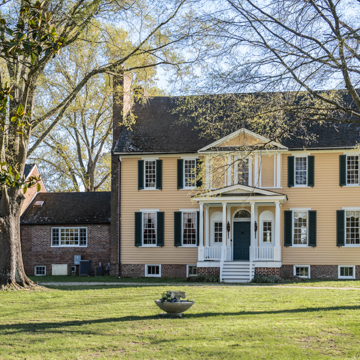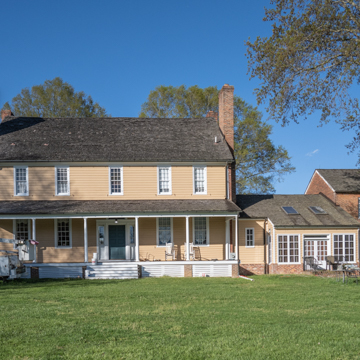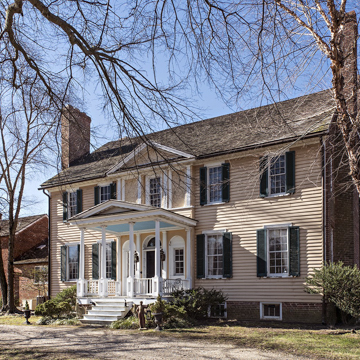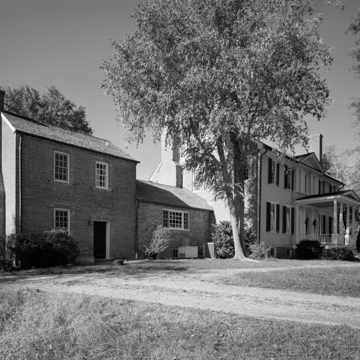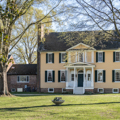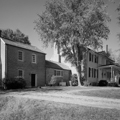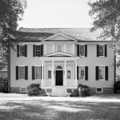La Grange represents the emergence within the Western Shore of the classically inspired Georgian plan and design aesthetic. The prominent two-story, two-room-deep, center-passage house with hyphened wing includes such high-style Georgian features as an elaborate Palladian pavilion front with pediment, triple blind-arched loggia, and fluted pilasters. At the same time, La Grange exhibits elements indicative of early Chesapeake architecture such as frame construction with brick end walls and pent chimneys. The kitchen wing was originally freestanding, and evidence suggests it may have been flanked by another dependency; it was later joined to the main block by the current hyphen. Much of the interior first-floor details indicate stylistic updates during the 1830s, while the second floor retains its original baseboards and bolection-style chair rails. It was built for physician James Craik, friend and neighbor to Gustavus Richard Brown at Rose Hill. The two properties were built at the same time and share similarities, both academically and regionally inspired.
You are here
LA GRANGE
If SAH Archipedia has been useful to you, please consider supporting it.
SAH Archipedia tells the story of the United States through its buildings, landscapes, and cities. This freely available resource empowers the public with authoritative knowledge that deepens their understanding and appreciation of the built environment. But the Society of Architectural Historians, which created SAH Archipedia with University of Virginia Press, needs your support to maintain the high-caliber research, writing, photography, cartography, editing, design, and programming that make SAH Archipedia a trusted online resource available to all who value the history of place, heritage tourism, and learning.













